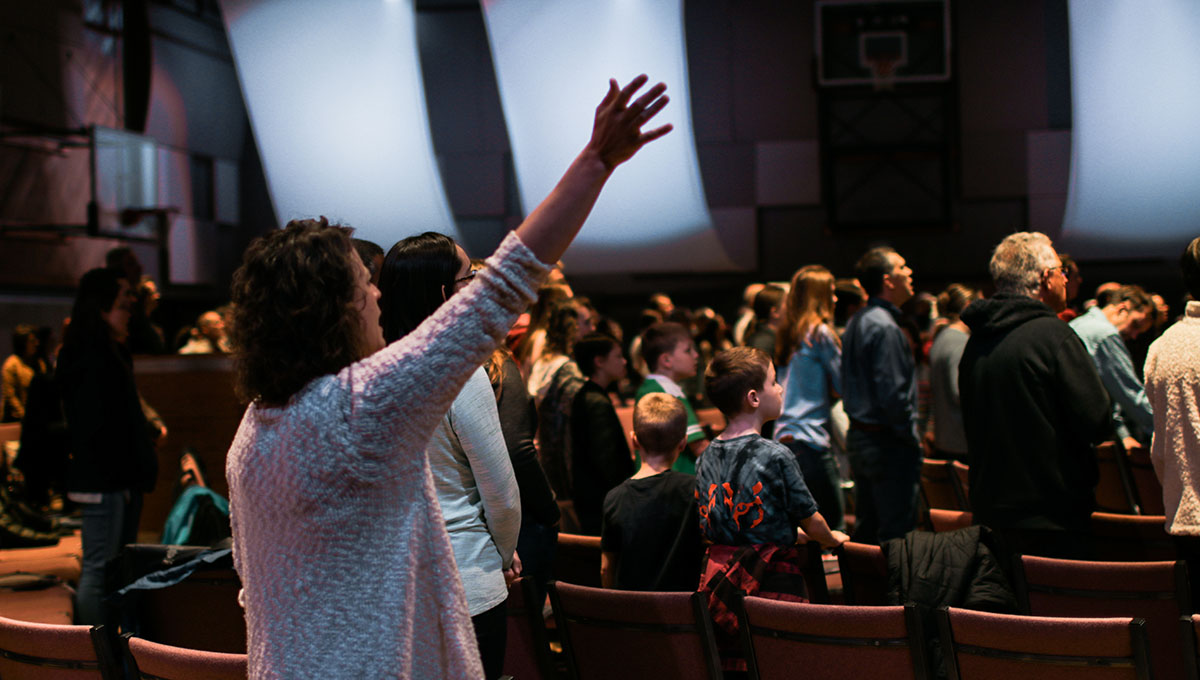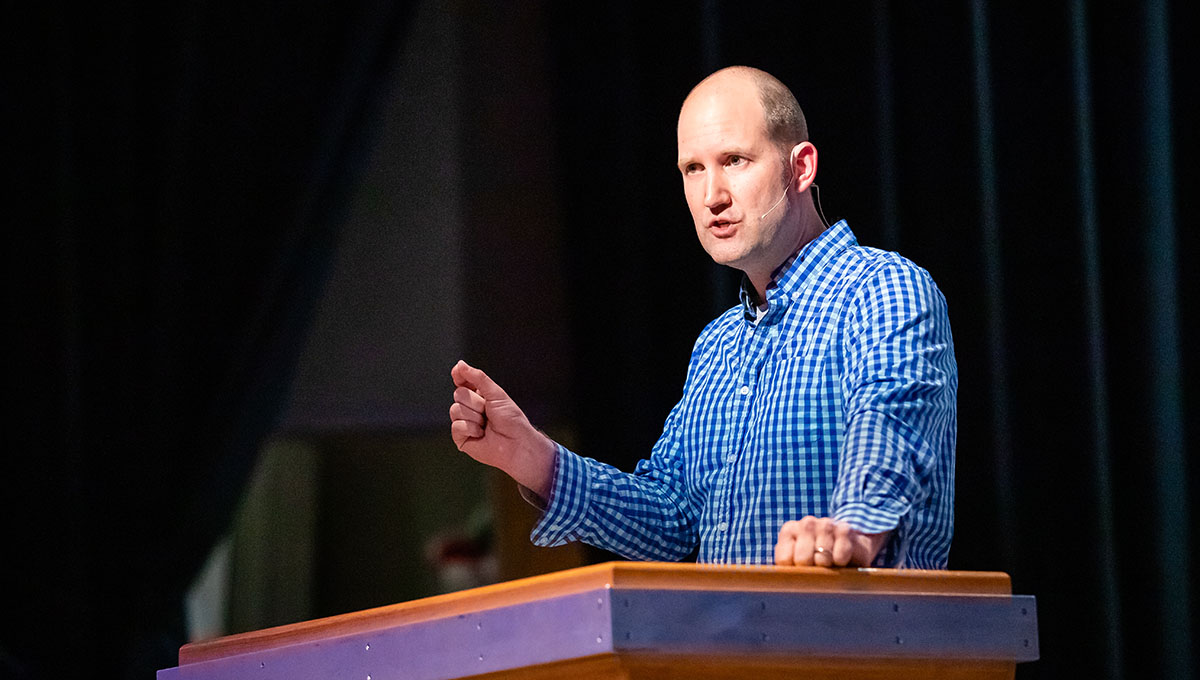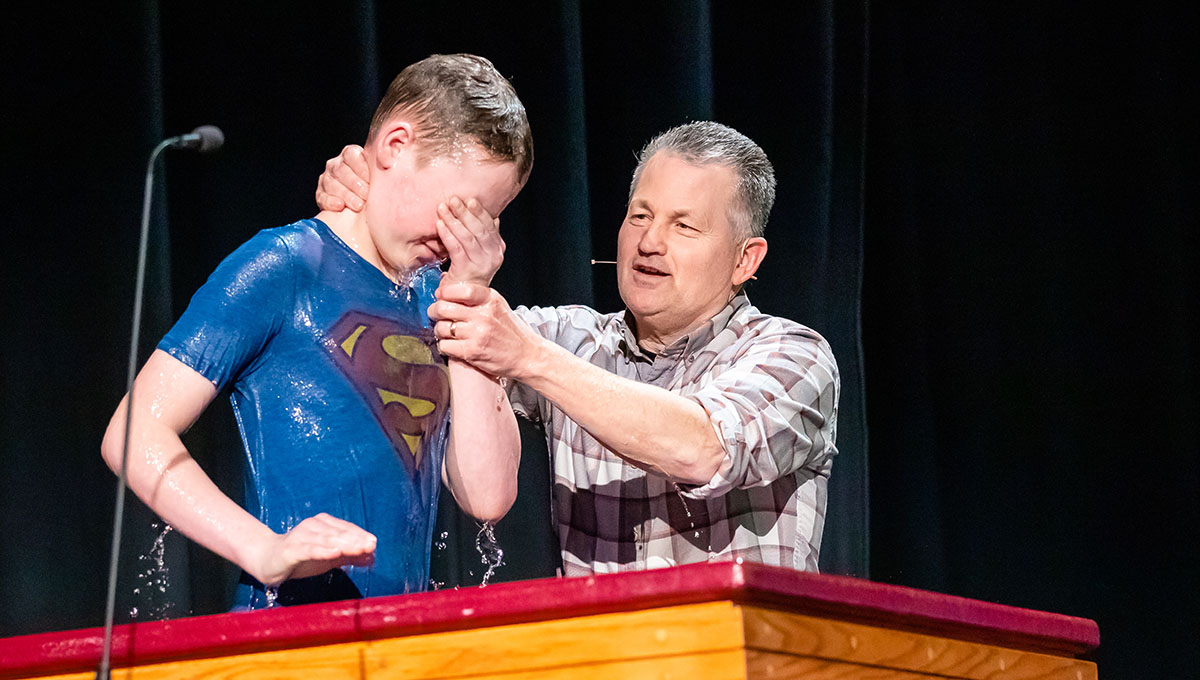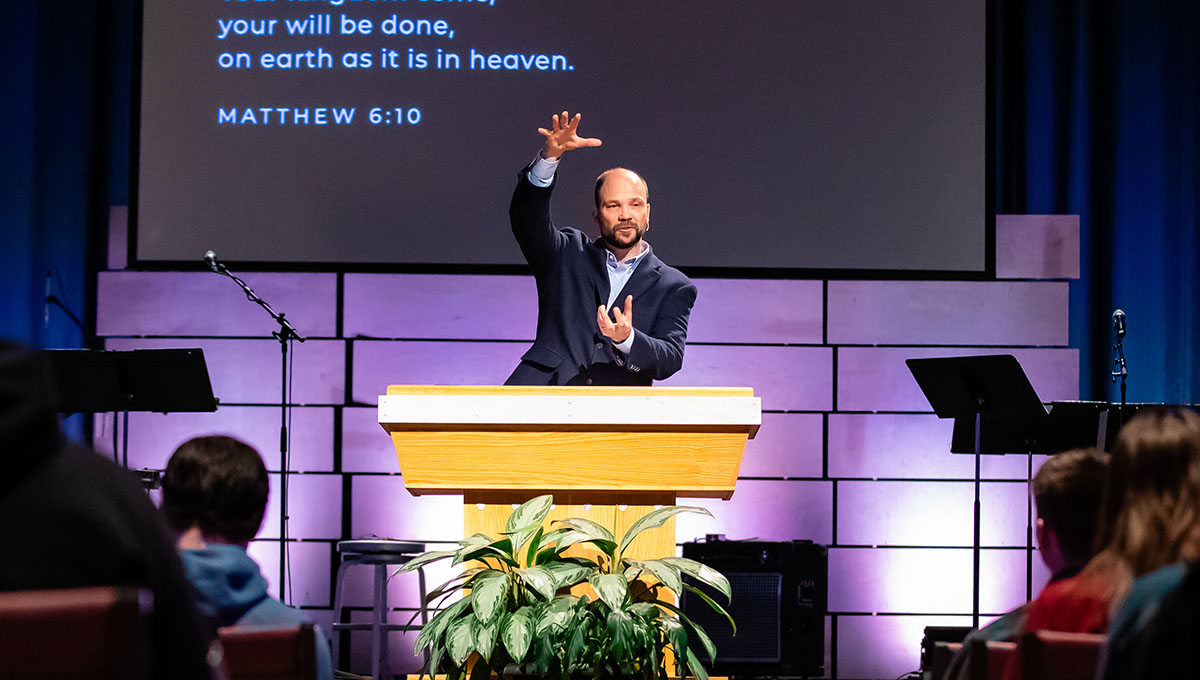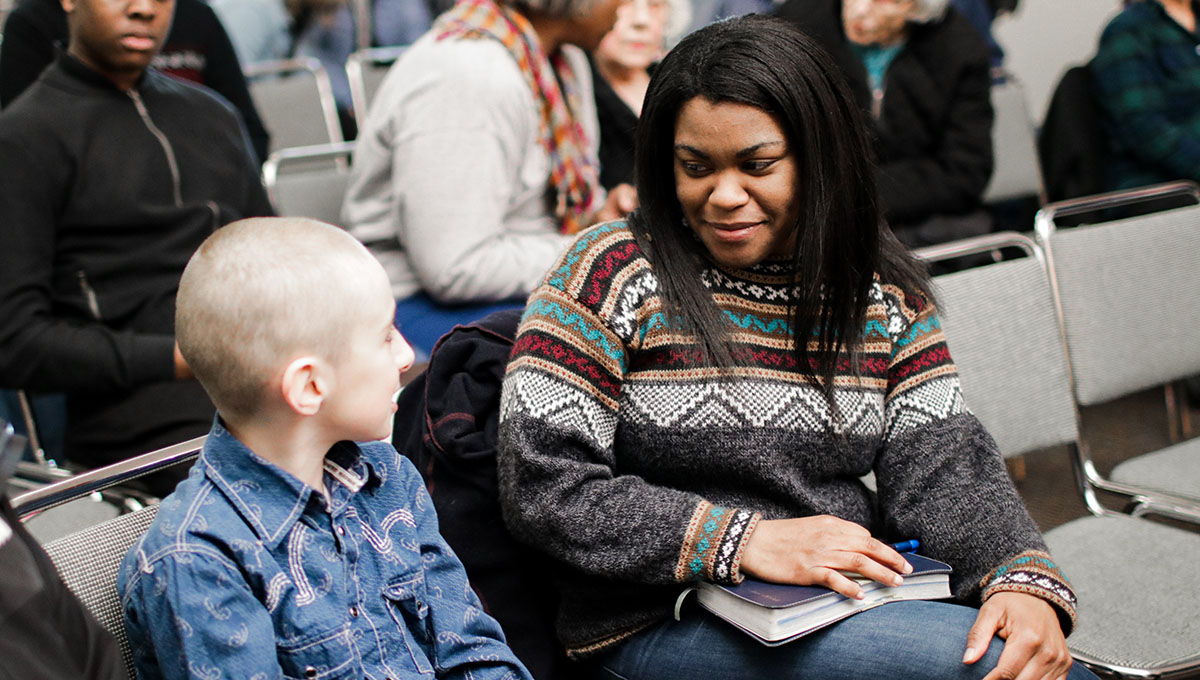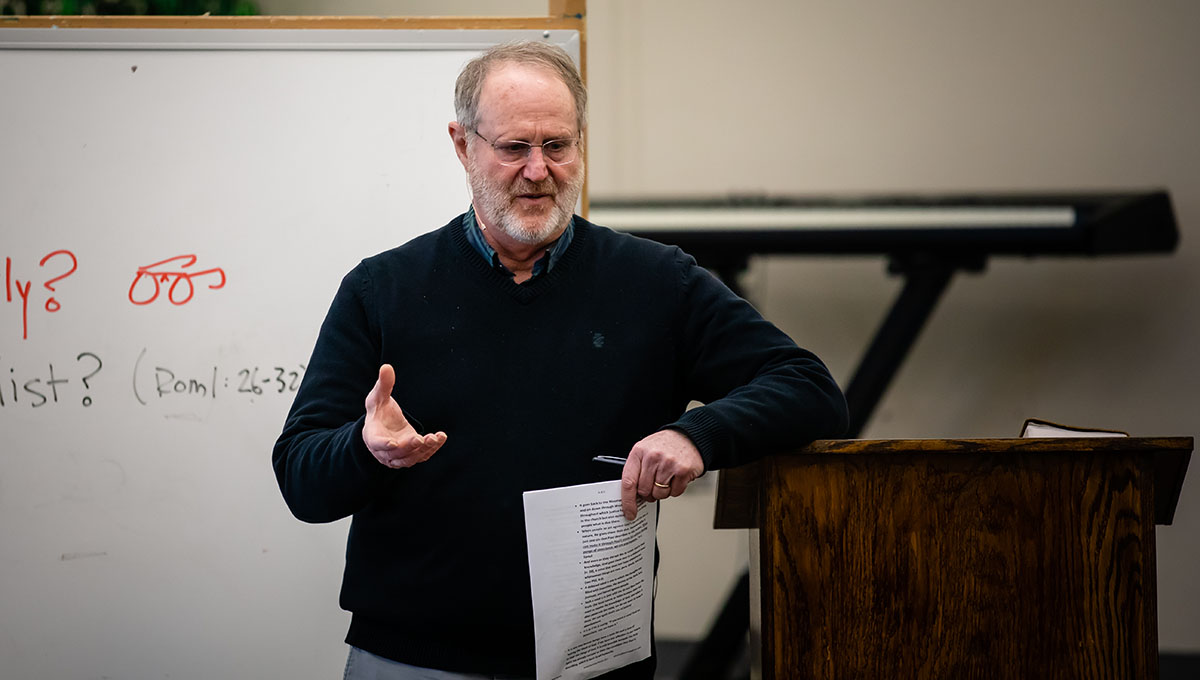Time Transformed: Understanding the Roots of Good Friday and Easter
- Nathan Schneider

Time is holy. I know we don’t think about time in a sacred sense. We like to relegate time as a wholly secular concept. Like gravity, it’s part of the world we live in. It moves inexorably forward. It has no morality or intrinsic ethic. It simply is.
But that’s simply not true. Not from the perspective of a Christian worldview. Time is a creation of God, and thus there is no such thing as secular time. All time belongs to God. All time is sacred. Paul summarized it pretty clearly: “Look carefully then how you walk, not as unwise but as wise, making the best use of the time, because the days are evil” (Eph. 5:15-16).
God wants his people to recognize the sacredness of time. He wants us to live today within the broader context of eternity. But he also wants us to understand today in light of the overarching narrative of redemptive history. He wants us to understand how today connects into what he is accomplishing through Jesus Christ. This has been a priority God has had throughout history.
Time Sanctified
Leviticus 23 is a chapter that deals specifically with time in a book that deals with the holiness of God and the holiness of God’s people. As such, it’s a chapter that’s all about understanding the importance of recognizing the holiness–the sacredness–of time. And to do that, God gave his people a sacred calendar. It was a calendar that regulated how Israel was to spend their time throughout the year so that they would understand two fundamental truths:
- Israel needed to remember and commemorate their history, because it represented God’s gracious work of redemption for them
- Israel needed to recognize that God and God alone had full authority over their time and their calendar.
With these two thrusts in mind, God gave his people a series of national feasts. They were celebrations, really, where the entire nation joined together to commemorate God’s redemptive work, worship together, and thank him for his bountiful grace and blessing. It was a way of uniting the people around God’s redemption and setting the present within the context of the past. And as God’s covenant people, they had annual opportunities to renew and reaffirm their allegiance to their covenant God and King.
Israel’s festal calendar coincided naturally with the agricultural year. Spring time in ancient Israel began with the barley harvest and then progressed to the wheat harvest. In the Fall, the focus shifted to the harvest of the grape, fig, and olive crops.
In Leviticus 23:4-22, we discover the three festivals that marked the opening of Israel’s annual festal calendar. The Passover, the Feast of Unleavened Bread, and the Feast of Firstfruits opened the year as a kind of festal trinity. These three feasts always accompanied each other, and they each had deep spiritual significance for God’s people.
The Passover
The Passover feast was, naturally, a continuation of the first Passover enacted in Exodus 12. If you recall, the Passover meal was the final straw that broke the back of Pharaoh, when God made the clearest of all distinctions between Israel and the Egyptians. Israel was instructed to slaughter a lamb and smear its blood on the doorposts of their homes. The blood marked the home as those who belonged to God and protected them from the death angel that swept across the land dispensing the judgment of God upon Egypt. This event was a definitive moment for Israel that marked them as belonging to God. Their exodus from Egypt which culminated in the crossing of the Red Sea began with their redemption through the Passover sacrifice. Thus, the feast was enshrined as an especially sacred day to be observed at twilight on the 14th day of the 1st month of the year (Lev. 23:5).
The Feast of Unleavened Bread
Accompanying the Passover meal was the Feast of Unleavened Bread, which was observed the following day, the 15th of the 1st month. The feast lasted the entire week, and prohibited the people from eating anything containing leaven (i.e., sourdough). The absence of leavening in their bread not only depicted the swiftness of their departure from Egypt, but represented the posture of the true, faithful worshipper who waited with faith and anticipation on the Lord to deliver and lead.
The Feast of Firstfruits
During the Feast of Unleavened Bread, a third feast was to be observed. The timing of this feast was variable, depending on which day of the week began the Feast of Unleavened Bread. On the day following the Sabbath of the Feast of Unleavened Bread (i.e., Sunday), Israel was to celebrate the Feast of Firstfruits by offering the first sheaf of barley from the spring barley harvest.
The meaning of this feast is subtle but significant. The portion given–that first sheaf of barley harvested–was actually representative of the entire harvest. It stood as a symbol of everything God had provided in the harvest, and offering it back to God provided Israel an annual opportunity to acknowledge and thank God for how he had bountifully provided for them and blessed them. What the Israelite worshipper was doing as he offered his “firstfruits” was recognizing that the land and everything it produced really belonged to God.
Time Transformation
Now, we’ve already noted that these feasts, as well as the others not mentioned, were intended to commemorate Israel’s redemptive history and call them to remember God’s gracious redemption, creation, provision, and blessing. As such, the festivals of Israel had specific temporal purposes for the people. But something else happens as we move from the Old Testament into the New Testament. Many of the feasts undergo a transformation, where the redemptive significance they had in the Old Testament is magnified and explodes with even greater significance in light of Christ’s death and resurrection.
Good Friday
This coming Friday is what we refer to as “Good Friday,” because it commemorates the death of our Lord on that Friday, where the Suffering Servant shed his blood for his people. But more than that, this day has special significance in that Christ very intentionally was put to death on the day of Passover (Matt 26:2). In fact, the meal Christ shared with his disciples in the upper room was the Passover meal (Luke 22:15). What Jesus does during this time is take the Old Testament picture of redemption in Egypt and transform it into a new feast–the Lord’s Supper–which commemorates his death. He was telling his disciples that he was the true Passover lamb.
And that’s exactly what happened. As the night unfolded, the disciples departed the upper room for the Mount of Olives, where Jesus was arrested and underwent a series of sham trials which led to his condemnation. By the next day, Friday, he was to be executed by Roman crucifixion. Little did the Romans or the Jews know, but they were in fact sacrificing the final pascal lamb:
“For Christ, our Passover lamb, has been sacrificed.” (1 Corinthians 5:7)
The events of Christ’s death correspond perfectly in the very details of the Passover requirements, even to the point that John was sure to note that none of his bones were broken (John 19:32, 33, 36), just as required of the Passover lamb (Exod 12:46; Num 9:12).
On Good Friday, we see the Old Testament Passover Feast which commemorated Israel’s redemption from Egypt transformed by the death of Christ to now commemorate how God as shown us compassionate protection from his wrath as we are covered by the blood of the Lamb of God.
Holiness
Just as Passover was always accompanied by the Feast of Unleavened Bread, we see this same thing happen as the significant of the latter festival receives a transformation as well. If God’s people are redeemed through the blood of the Lamb of God who was slain for them, then that redemption should mean something in how they conduct themselves in the world. Paul makes this point very clear when he argues that the death of the Passover lamb should lead to purity in God’s church:
Your boasting is not good. Do you not know that a little leaven leavens the whole lump? Cleanse out the old leaven that you may be a new lump, as you really are unleavened. For Christ, our Passover lamb, has been sacrificed. Let us therefore celebrate the festival, not with the old leaven, the leaven of malice and evil, but with the unleavened bread of sincerity and truth.” (1 Corinthians 5:6-8)
What’s clear from Paul’s words is that leavening, which in the original feast was meant to symbolize time which the Israelites did not have–they didn’t have time to prepare leavened bread, but needed to be ready to depart when the Lord visited them–that leavening had an even more spiritual significance. It became a symbol of how sin corrupts, and how God has taken what was once evil and sinful (i.e., us!) and has created something new, something pure. “Cleanse out the old leaven that you may be a new lump, as you really are unleavened” (1 Cor. 5:7a). This is a way of saying, be who you are! The Feast of Unleavened Bread becomes a feast that believers live out every day as they conduct themselves in holiness in light of that fact that “Christ, our Passover lamb, has been sacrificed” (1 Cor. 5:7b).
Easter
The third of this “festal trinity” that marked Israel’s sacred calendar receives perhaps the most drastic transformation of them all. Whereas the Feast of Firstfruits was intended to acknowledge God as the gracious provider of Israel’s needs, and owner of their land, and the ultimate end of all their time and devotion, with Christ, it assumed a defining place in Christian theology.
It is not insignificant nor coincidental that Christ’s death on Passover occurred on a Friday, and that he was to rise on the third day. That aligned his resurrection from death specifically with the Feast of Firstfruits, which always occurred on the day following the Sabbath during the week of the Feast of Unleavened Bread.
Thus, it shouldn’t be surprising that Paul refers to Christ’s resurrection as the “firstfruits” of all who will one day rise in him (1 Cor. 1:20). Just as he rose on the day the Firstfruits feast, so his resurrection represented exactly what that first barley sheaf represented–the entire harvest that it came from. In other words, Christ’s resurrection represents all who will rise to eternal life. His resurrection is a guarantee that the rest will rise in time (1 Cor. 15:23).
Sunday
Now, if it hasn’t clicked yet, the day of the week for this transformed “Firstfruits” festival is significant. Throughout the Old Testament, Israel’s week was oriented around Saturday, the Sabbath. That day, as most of us well know, was set apart from the rest of the week as a unique day for God’s people. In fact, the Sabbath principle established a paradigm for understanding the expectations for the remaining festivals to come:
“The religious year is dominated by the sacred number seven (symbolizing the perfect work of God). Hence (a) every seventh day is a holy sabbath; (b) every seventh year is a Sabbath year of rest for the crop-bearing land; (c) every seven sevens of years the fiftieth year is to be hallowed as a jubilee, in which all mortgaged lands are to be returned to the original family; (d) Passover is held at the end of the second haptad of Abib, on the evening of the fourteenth; (e) the Feast of Unleavened Bread is celebrated for the next seven days; (f) the Feast of Pentecost is celebrated after seven sevens of days following the offering of the wave-sheaf (hence on the “fiftieth” day); (g) the seventh month, Tishri, is especially sanctified by three holy observances: the Feast of Trumpets, the Day of Atonement, and the Feast of Tabernacles; (h) the Feast of Tabernacles is celebrated seven days (fifteenth to twenty-second of Tishri), plus an eighth day for the final convocation.” (Archer, 259-60).
Obviously, the Sabbath had an important role in forming spiritual life in Israel. It was the oldest of the “holy times,” founded on the seventh day of creation week (Gen. 2:1-3) and intended to commemorate God’s cessation from his creative work when he celebrated his creation as “very good” (Gen. 1:31). As Allen Ross notes, “This Sabbath rest was possible because the people that God had made rested in the perfect and unbroken fellowship with the Creator” (Ross, Holiness to the Lord, 397).
When sin was introduced to this world, it ruined that perfect creation and broke the perfect fellowship his people enjoyed with him. Thus, from Genesis 3 until Exodus 20, there was no observance of a “Sabbath” nor any reference to it. How could there be? It was impossible to impose a Sabbath rest on fallen humanity because the rest it memorialized had been destroyed by sin. Ross writes,
“God began the work of redemption toward a new creation that once again was at rest (Gen. 3:15, 21; John 5:17); he worked to restore the divine rest destroyed by sin (Rom. 8:18-22). The idea of the Sabbath, therefore, disappeared from Scripture until it was reinstituted at Mount Sinai for the people of whom God redeemed.” (Ross, 398).
The Sabbath command (the 4th of the 10 commandments) is unique among God’s commandments. It was never imposed on any other people but Israel, nor could it have been. After all, how could God impose the commemoration of man’s rest in fellowship and peace with God with a people who had not been redeemed? But as a nation that had been redeemed from Egypt by the blood of the Passover lamb, Israel was set apart from fallen humanity as a people that enjoyed fellowship with God. Ross goes on to point out that
“it was at Sinai that the observance of Sabbath could be instituted, because there God made a covenant with his redeemed people. The meaning of this law, like all the moral laws expressed in the Ten Commandments, had been revealed from the beginning. But the difference was that the enjoyment of the Sabbath had been possible only for unfallen humans, whereas the other nine commandments were binding upon all people from the beginning. It was only after God formed a nation of redeemed people that he could impose Sabbath observance consonant with the meaning of the day.” (Ross, 398).
Now, the Sabbath held several functions. For one, it served as the sign of the Mosaic Covenant (cf. Exod. 31:13-18; Isa. 56:6), and by that I mean that…
- it reminded Israel of their physical limitations and afforded them of opportunity to rest and gain physical refreshment
- it provided special opportunity for Israel to focus on spiritual service and worship as a community without the distraction or worries of common daily life
- It reminded them of the first Sabbath and the rest first established by God (Exod. 20:8-11)
- It reminded them of their redemption from slavery in Egypt (Deut. 5:12-15)
- It anticipated the rest they would enjoy in the land (Deut. 6:23; 12:9)
- It commemorated God’s work of redemption which would remain incomplete until all promises were fulfilled in the land of promise.
That last point is important. What it says is that the Sabbath observance carried a prophetic function. Not only did it signify the promise of the covenant and the hope to enter God’s rest in the land, but it anticipated a greater spiritual rest to be enjoyed.
“The biblical concept of reset is used throughout Scripture to portray the promised rest that would in the end restore what was lost by the fall. In anticipation of that time the promise of rest was repeatedly connected with the promised land, as if that good land was a replica of the garden of Eden from whence the first sinners were expelled and the foretaste of things to come.” (Ross, 400).
As it turns out, the first generation of Israel…the one that was redeemed from Egypt…never enjoyed the rest promised in the land. They all died in the wilderness because of unbelief (Ps. 95:11). Even after Israel entered the land, they enjoyed rest only periodically throughout their history (Josh. 21:44-45; 2 Sam. 7:1, 11; 1 Kgs 8:56), but never the full rest that was promised. By the end of the Old Testament era, the spiritual rest envisioned and anticipated by the Sabbath still hung as an unrealized ideal.
But all that changed with Christ. He came to bring “rest” to the weary and heavy-laden (Matt. 11:28), and as Lord of the Sabbath (Matt. 12:8), he had the authority to do work commensurate with the work his Father had been doing throughout redemptive history (John 5:17). In other words, Jesus’ redemptive work has fulfilled what was anticipated by the Sabbath day. Israel observed the Sabbath as a day of physical rest. But Christ has given us what that physical rest anticipated…spiritual rest and peace with God.
So it should be no surprise, then, that with the resurrection of Christ falling on the Feast of Firstfruits, there was a fundamental shift in the weekly calendar of God’s believing people. We have, through faith in Jesus Christ, entered into rest with God…an eternal Sabbath accomplished in Christ (Heb. 3-4). The shadow of the old has given way to the reality of the new. The early church recognized that, and so the Jewish holiday of Firstfruits was subsumed by the Christian holiday of Easter, and the sacredness of Saturday as the Sabbath day was eclipsed by Sunday, not as a “new Sabbath,” but as “the Lord’s Day” (Rev. 1:10), “the first day of the week” (Acts 20:7; 1 Cor. 16:2) when the Christian church met together specifically because it was the day of the Lord’s resurrection.
Putting it all together
This week, we commemorate the death, burial, and resurrection of our Lord Jesus Christ. These are events which were anticipated and prophesied throughout Old Testament history, from the suffering servant of Isaiah 53 to the promise that the Davidic seed would not be abandoned to Sheol or undergo corruption (Ps. 16:10). But what we also see is that God has even oriented the calendar of his people to foreshadow the redemptive acts he would accomplish on their behalf and ours, and in so doing, transform those holy days into something far beyond what they originally commemorated.
All time belongs to God. All time is a gift from him to be graciously used as a spiritual resource by faithful stewards. It calls us to be intentional. It calls us to be wise. It calls us to honor God as the creator, the sustainer, the provider, and the redeemer of life. And it calls us to marvel at the spiritual realities which God graciously foreshadows in the Old Testament feasts of Israel.
As we celebrate Christ resurrected, let it bring you humble joy and unswerving confidence that we who are in Christ have certainty to hope in our own resurrection because of the One who is the firstfruits of that great resurrection harvest to come.


